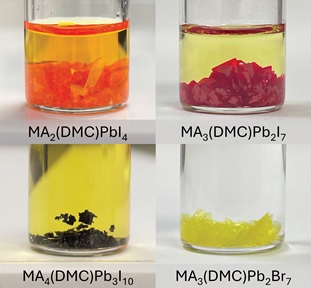
A New Aspect of Material Analysis: Molecular Chirality Detection Device Based on Topological Insulator
Synopsis
Topological insulators offer a significant opportunity for detecting molecular chirality and determining light polarisation. These insulators introduce a nanostructured metamaterial for polarisation-sensitive photodetectors, enhancing chiral photo-galvanic response. They have applications in quantum sensing, molecular chirality determination, and light detection and ranging (LiDAR) with single-photon-sensitive detection for high-resolution ranging.
Opportunity
The use of topological insulators presents an opportunity in detecting molecular chirality and determining the status of light polarisation. These unique materials, with their robust conductive properties on the surface and insulating characteristics within, offer a versatile platform for investigating and differentiating molecular structures based on their chirality. Furthermore, their distinct behaviour in response to light polarisation allows precise analysing and manipulating of light properties, providing a potential breakthrough in various optical and molecular detection technologies for healthcare, quantum and optical sensing applications.
Technology
The invention relates to nanostructured metamaterial for polarisation-sensitive photodetectors (circular photogalvanic effect; CPGE). With the nanostructuring, chiral photo-galvanic response can be enhanced on topological insulators. The tight confinement of electromagnetic fields in the resonant nanostructure enhances the photoexcitation of spin-polarised surface states of topological insulator Bi 1.5 Sb 0.5 Te 1.8 Se 1.2 (BSTS), leading to an 11-fold increase of the circular photogalvanic effect and an unprecedented photocurrent dichroism (ρcirc=0.87) at room temperature.
There is potential for this concept to integrate both “topological insulator” (conductive and generation of photocurrent at the edge of 2D-material, and surface of bulk, but pure insulator in its interior) and “superconducting” physics for device functionality as below:
- polarisation sensitive photodetector
- electron spin polarised photodetector
- device for measuring molecular chirality
- quantum opto-spintronic device for transferring of polarisation and entanglement from photons to electron spins
Applications & Advantages
- Quantum sensing in military and defence and automotive sectors.
Use cases: modulation based on light polarisation, materials analysis based on responses to polarisation, single photon detection.
Molecular chirality state determination: drug-screening, biopharma, biochemistry analytical tool, such as circular dichroism spectroscopy, for protein secondary structure analysis, and possible chiral molecule as disease biomarker, etc.
- LiDAR technology: single-photon sensitive detection is an emerging approach, offering high sensitivity to light and picosecond temporal resolution, and consequently excellent surface-to-surface resolution.














/enri-thumbnails/careeropportunities1f0caf1c-a12d-479c-be7c-3c04e085c617.tmb-mega-menu.jpg?Culture=en&sfvrsn=d7261e3b_1)

/cradle-thumbnails/research-capabilities1516d0ba63aa44f0b4ee77a8c05263b2.tmb-mega-menu.jpg?Culture=en&sfvrsn=1bc94f8_1)


.tmb-listing.jpg?Culture=en&sfvrsn=29c7e020_1)

.tmb-listing.jpg?Culture=en&sfvrsn=7a33f2b7_1)
.tmb-listing.jpg?Culture=en&sfvrsn=3b74ec1c_1)
-and-the-coated-wood-(ntu-singapore).tmb-listing.jpg?Culture=en&sfvrsn=624bb80c_1)







